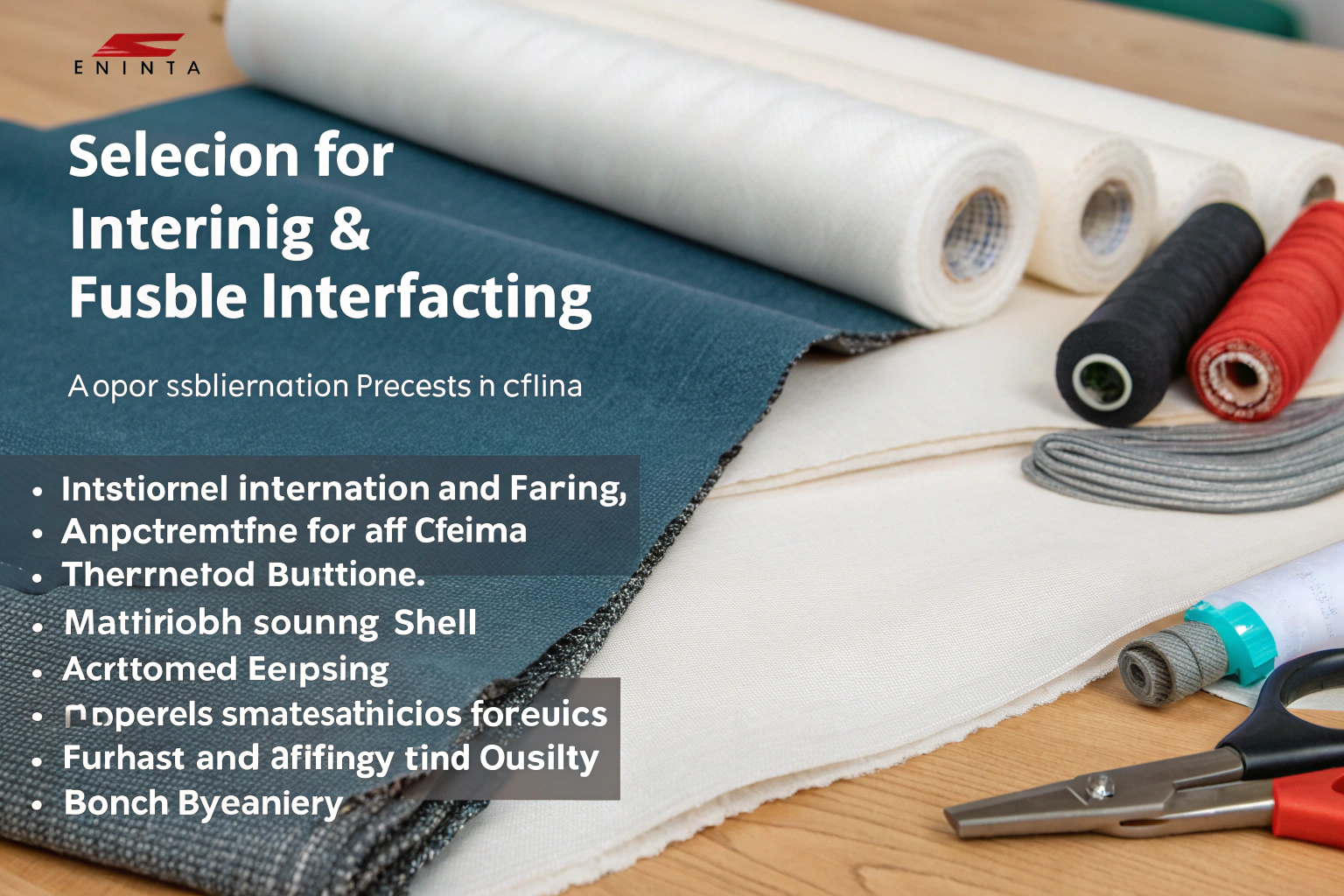As a jacket manufacturer with over two decades of experience, I understand the complexities of interlining selection. Many of our international clients face challenges in this area, particularly when managing supply chains from China to destinations like the United States. The improper selection of interlining components can compromise a jacket's aesthetic appeal, functional performance, and overall quality integrity.
The selection of appropriate interlining and fusible interfacing requires precise matching with your shell fabric characteristics and desired garment architecture. Critical considerations include substrate compatibility, thermal bonding parameters, and performance requirements to ensure durable lamination that maintains structural integrity throughout the product lifecycle. This technical alignment is particularly crucial for brands emphasizing quality assurance while managing cost efficiency in global sourcing operations.
This comprehensive guide systematically addresses the fundamental aspects of interlining selection. We will examine material classifications, compatibility matrices, quality verification protocols, and supply chain optimization strategies to enhance your technical decision-making capabilities for future production cycles.
What are the primary classifications of jacket interlining?
The interlining landscape primarily comprises two distinct categories: fusible and non-fusible variants. Fusible interlining incorporates thermally activated adhesive coatings that bond with shell fabrics through controlled heat and pressure application. This category dominates contemporary manufacturing due to its production efficiency and consistent stabilization properties. Non-fusible or sewn interlining utilizes mechanical attachment methods, typically employed for delicate textile substrates or specific drape requirements.
The determination between fusible and non-fusible applications depends on your textile properties and construction methodology. Structured blazers and uniform jackets typically employ fusible interlining to achieve precise silhouette definition. Deconstructed jackets or garments utilizing thermally sensitive materials like silk often benefit from non-fusible alternatives to prevent substrate degradation.
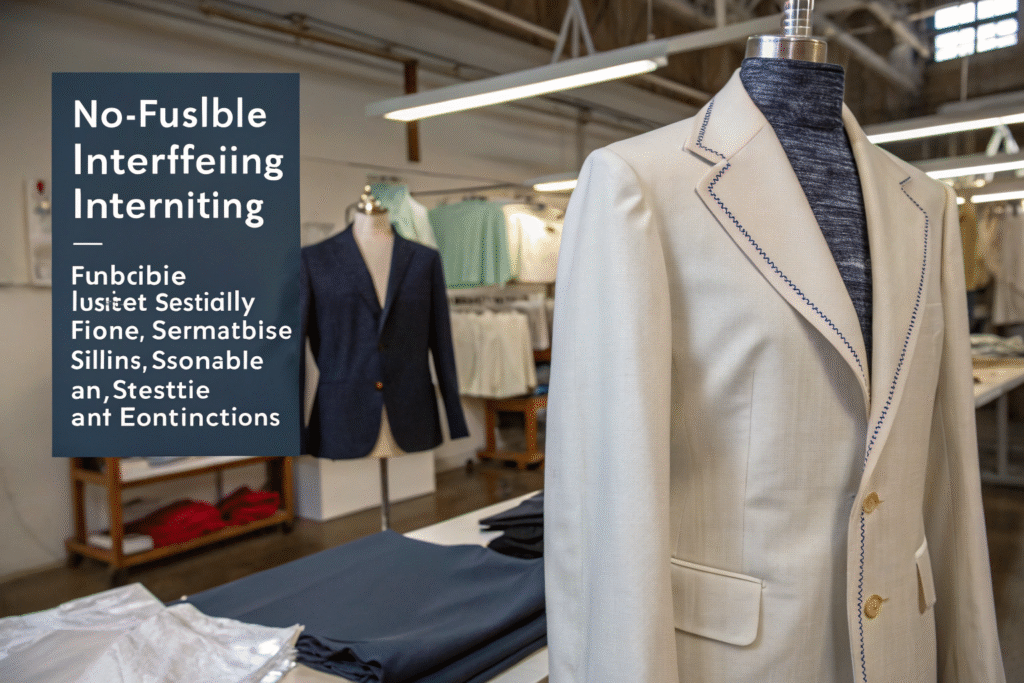
How do woven, non-woven, and knitted interlining substrates differ?
Understanding substrate construction is fundamental to interlining selection. Woven interlining features orthogonal yarn interlacing, mirroring conventional textile structures. This configuration delivers exceptional dimensional stability with limited extensibility, making it ideal for structured garment components like collar stands and cuff reinforcements. It demonstrates optimal compatibility with woven shell fabrics such as our premium cotton poplin or technical wool blends.
Non-woven interlining utilizes fiber web consolidation through chemical, mechanical, or thermal bonding processes. While economically advantageous, this category may present durability limitations and sometimes exhibits less desirable hand characteristics. We recommend non-woven variants for secondary garment areas or cost-driven projects where superior drape properties are not critical. Knitted interlining employs interlooped yarn construction, providing inherent multidirectional extensibility. This architecture makes it particularly suitable for stretch textile applications and contemporary sportswear where freedom of movement is paramount.
How does interlining basis weight influence garment engineering?
Interlining basis weight must demonstrate complementary characteristics with your shell fabric properties. Excessive weight interlining applied to lightweight, drapable textiles will counteract the material's natural flow characteristics, resulting in undesirable stiffness and compromised comfort. Conversely, insufficient weight interlining on heavy-duty substrates fails to provide necessary structural reinforcement.
This engineering balance represents a critical technical consideration. Our material specification framework provides clients with systematic guidance:
| Shell Fabric Category | Recommended Interlining Weight | Projected Structural Outcome |
|---|---|---|
| Lightweight Substrates (e.g., Chiffon, Silk) | Lightweight (20-40 gsm) | Soft contouring, maintained drape coefficient |
| Medium Weight Substrates (e.g., Poplin, Tencel™) | Medium Weight (40-80 gsm) | Defined architectural lines, blazer appropriate |
| Heavy Weight Substrates (e.g., Denim, Coating Wool) | Heavyweight (80-120+ gsm) | Rigid structural integrity, outerwear applications |
Precision in this specification phase is critical. Our CNAS-certified laboratory conducts comprehensive compatibility validation to prevent delamination or bubbling phenomena common in improper substrate pairing.
How do I achieve optimal fusible interfacing compatibility?
The fundamental principle governing fusible interfacing selection is substrate compatibility. The bonding process must establish permanent adhesion without compromising the face fabric's integrity. The interfacing's thermal activation parameters must align with the shell fabric's heat tolerance threshold. Premium wool coating substrates may experience thermal degradation at high fusion temperatures, while synthetic composites often require elevated thermal conditions for proper bond formation.
This technical matching underscores the importance of supplier quality assurance capabilities. We implement standardized fusion testing protocols for all new material combinations, evaluating bond strength while monitoring for adhesive strike-through and hand characteristic alterations.
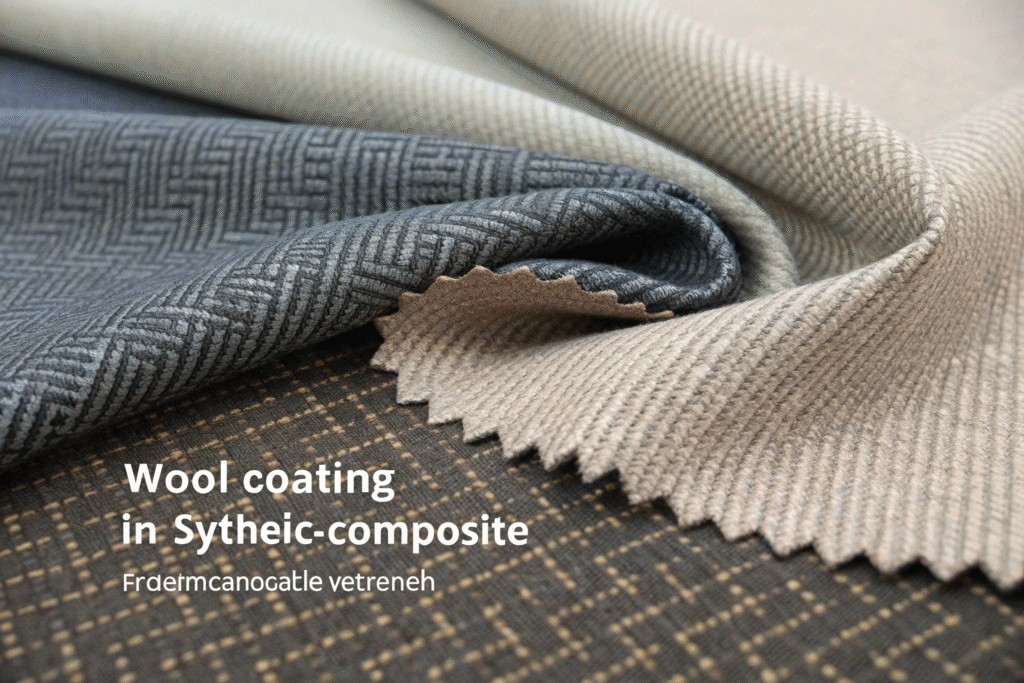
What parameters govern thermal bonding optimization?
Temperature, duration, and pressure constitute the critical triad of fusion bonding parameters. Manufacturing equipment must maintain precise calibration to established technical specifications. Insufficient thermal exposure results in inadequate bond formation, leading to interfacial failure during care procedures. Excessive thermal energy risks substrate damage, manifesting as bubbling, discoloration, or textile degradation.
We mandate that clients request technical data sheets from interlining suppliers, detailing optimal fusing conditions including temperature ranges, dwell periods, and pressure specifications. Low-temperature adhesives specifically address thermally sensitive substrates. This empirical approach eliminates speculative processes, replacing them with validated technical protocols that prevent production failures.
How does adhesive chemistry impact performance specifications?
The dot coating applications on interfacing substrates vary significantly in chemical composition and performance characteristics. Primary adhesive systems include Polyamide (PA), Polyethylene (PE), and Polyester (PES), each demonstrating distinct property profiles. PA systems activate at lower temperatures while providing flexible bonds suitable for diverse apparel applications. PE formulations require elevated thermal conditions but deliver superior wash resistance, ideal for uniform and workwear specifications.
The dot distribution pattern (e.g., fine scatter versus coarse scatter configurations) further influences hand characteristics and bond integrity. Finer dispersion patterns yield softer hand properties, while coarser distributions enhance bond strength. Selection criteria should align with functional requirements—structured collar components benefit from robust bonding, while overcoat roll lines require flexible adhesion.
What quality verification protocols ensure interlining performance?
Garment integrity depends on the durability of the textile-interlining composite through specified care cycles. The interfacial bond must withstand repeated cleaning procedures—whether aqueous washing or chemical cleaning—as defined by end-use care labeling. Our quality verification protocols include peel strength testing and dimensional stability assessment under accelerated aging conditions.
Our laboratory employs standardized testing methodologies to evaluate bond durability following multiple care cycles. We quantitatively measure interfacial failure resistance while monitoring composite dimensional changes that could cause garment distortion—a significant concern for brands managing product return rates.
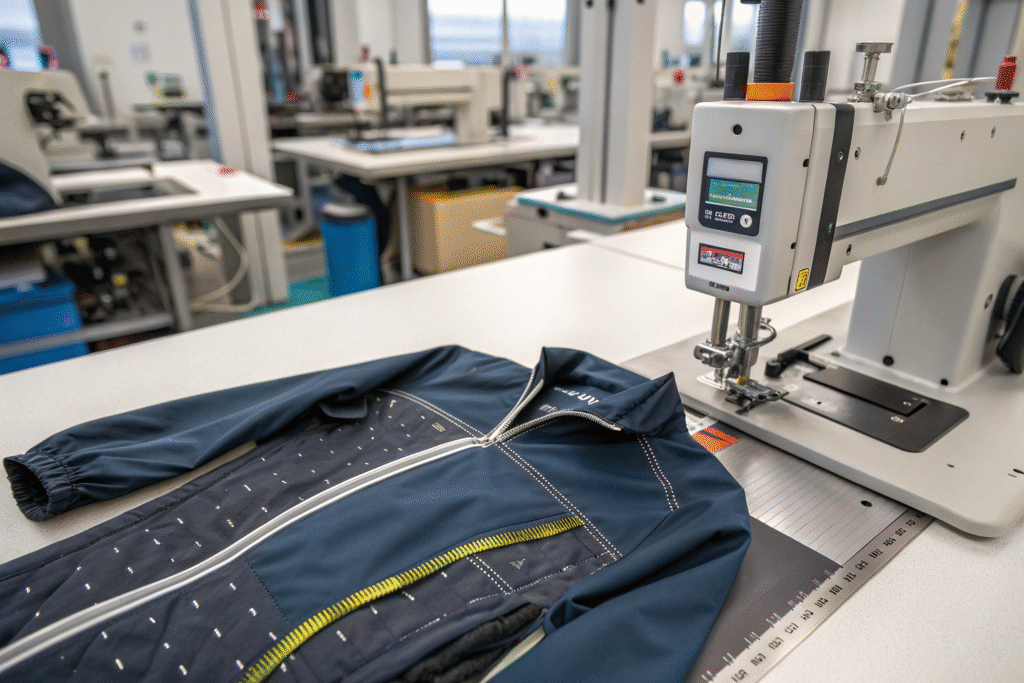
What methodologies assess dimensional stability and delamination resistance?
Dimensional stability testing employs straightforward but critical protocols. We subject marked composite samples to standardized cleaning cycles, then precisely measure dimensional variance. High-performance interlining demonstrates minimal shrinkage, mirroring the shell fabric's dimensional characteristics to prevent interfacial stress and puckering.
Delamination resistance testing utilizes tensile measurement equipment to quantitatively assess bond integrity. The protocol mechanically separates the interlining from the shell fabric at controlled angles and rates, measuring the force required for interfacial failure. Superior bonding demonstrates high peel strength values—a non-negotiable requirement for technical outerwear and uniform applications experiencing rigorous use cycles.
Which certifications validate interlining compliance?
Third-party certifications provide objective validation of interlining quality and safety parameters. The Oeko-Tex Standard 100 certification verifies the absence of regulated substances throughout the interlining substrate. Compliance with ISO performance standards further confirms material reliability under specified use conditions.
Our global supply chain operations ensure all material components meet international regulatory requirements. Clients receive comprehensive test reports from accredited laboratories like SGS and ITS, providing assurance for end-market compliance—particularly crucial for brands distributing in regulated markets like the United States and European Union where product safety standards are rigorously enforced.
How can supply chain integration optimize interlining specification?
Progressive suppliers extend beyond basic material provision to offer comprehensive technical partnership throughout the production cycle. Integrated services spanning material selection through final inspection streamline operational workflows, reduce communication discontinuities, and accelerate market delivery—critical factors for procurement professionals managing complex global supply chains.
The optimal supplier maintains strategic relationships with interlining manufacturers and possesses the technical expertise to recommend substrate-specific solutions. They should manage the complete specification and validation process, delivering pre-approved composite materials ready for cutting operations. This integrated approach eliminates the operational burden of multi-vendor coordination.
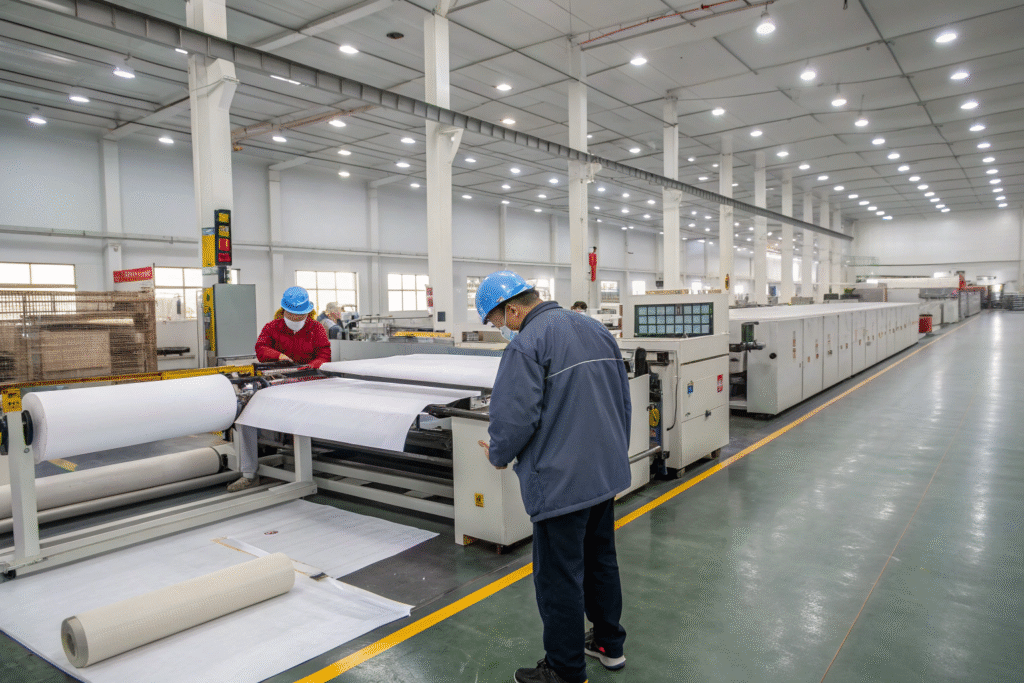
What operational advantages does integrated sourcing provide?
Integrated sourcing generates significant efficiency gains across time, cost, and risk parameters. Consolidating shell fabric and interlining procurement through a single provider simplifies logistical complexity and minimizes compatibility uncertainties. This streamlined approach reduces administrative overhead while enhancing technical coordination.
Our integrated service model allows clients to specify design intent and performance requirements, after which we manage the complete material engineering process. We source primary textiles, select and procure compatible interlining, execute precision fusing operations, and deliver validated composite materials—all under comprehensive quality management protocols that achieve consistent inspection pass rates exceeding 98%.
How does supply chain integration affect cost structure and lead times?
While component-based sourcing may appear economically advantageous initially, the hidden expenses of supply chain coordination, technical management, and potential compatibility failures often result in higher total cost. Integrated suppliers leverage procurement volume and technical partnerships to optimize pricing, transferring these benefits to clients while addressing industry cost sensitivity.
Our strategic positioning within the Keqiao textile ecosystem enables exceptional operational agility. We deliver engineered samples within 48-hour cycles, while our integrated supply chain facilitates rapid production scaling. This responsiveness enables clients to capitalize on market trends and meet compressed delivery schedules—directly addressing procurement challenges related to cost efficiency and timeline management.
Conclusion
Interlining specification represents a technical discipline that, when properly understood, becomes a manageable component of garment engineering. The process fundamentally involves comprehending shell fabric properties, intended structural outcomes, and performance requirements. Systematic attention to substrate compatibility, empirical validation through testing, and verification through certification establishes a robust foundation for quality assurance. This knowledge framework empowers effective manufacturer collaboration and ensures final product integrity.
For brands seeking a technical partner for jacket development, with fully integrated services from textile sourcing through interlining specification and rigorous quality verification, our organization provides comprehensive solutions. We invite discussion regarding your specific design objectives and performance requirements. For detailed technical consultation, please contact our Business Director, Elaine, at elaine@fumaoclothing.com. Our technical team stands ready to support your product development journey from conceptualization through commercial realization.

